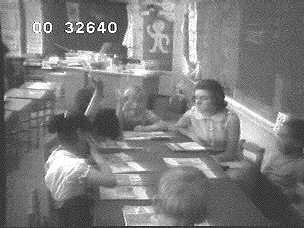The problem, relatively simply stated is to relate NCLB regulations (e.g. a 2009 "guidance" document), as written by the Federal Department of Education, to moment to moment interaction in a classroom (e.g. a reading lesson as analyzed by McDermott), or a planning meeting with principal and teachers. Graphically:
Be it enacted by the Senate and House of Representatives of the United States of America in Congress assembled,  An Act -- To close the achievement gap with accountability, flexibility, and choice, so that no child is left behind. aka "the No Child Left Behind Act of 2001" |
to |
 |
||
or |
Teacher_1: We are a successful SINI that is failing? Principal: Actually, they [the DOE] know we met our AYP last year and this year. Teacher_3: So, why are we SINI again? [...] Principal: I'm frustrated too! We are a remarkable success here. All of you know that. I certainly know that. They [the DOE] say we need improvement because we failed to meet the ELA AYP, but we didn't….I don't want us to get hung up on labels. We know that we met the AYP and still we need to direct some energy into all the things that get thrown at us for being a SINI. We know how to do this, even if we don't want to, right? Nonetheless, for the next half hour, teachers worked to make sense of the SINI designation. The teachers focused on how to attend to the failure, which the students were not, in the aggregate, demonstrating. They decided to have the students do more concentrated vocabulary and arithmetic in small groups; to tutor individual students for a larger part of each day; and to make weekly benchmarks for their classes to meet. They were, as a group, addressing the failure as if they had not succeeded. ... They ... performed attending to failure and "passed" as a "failing school." |